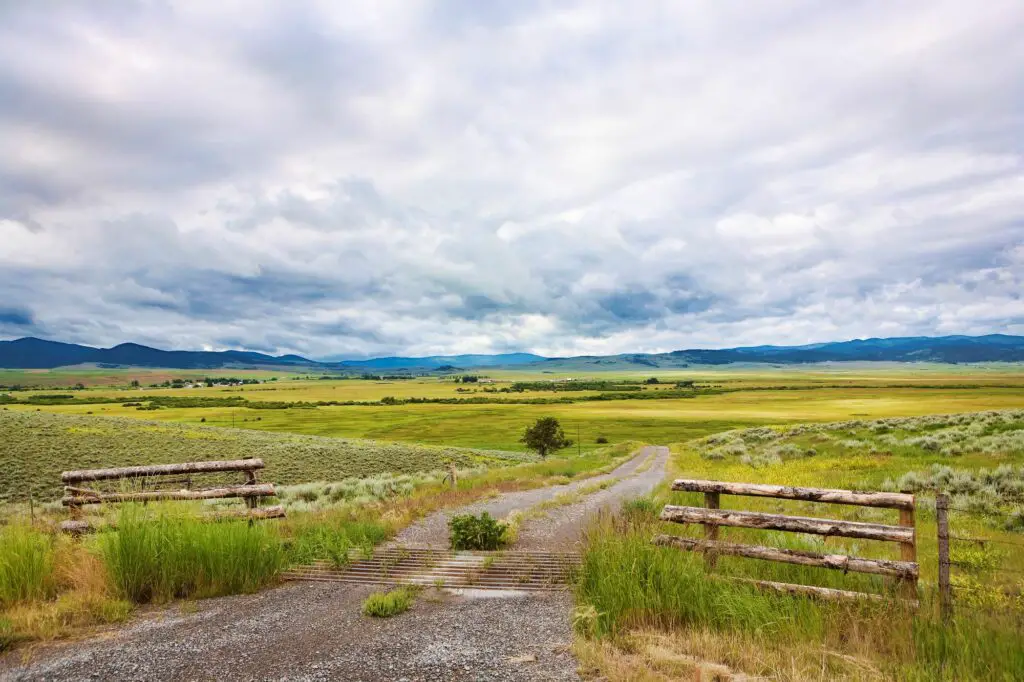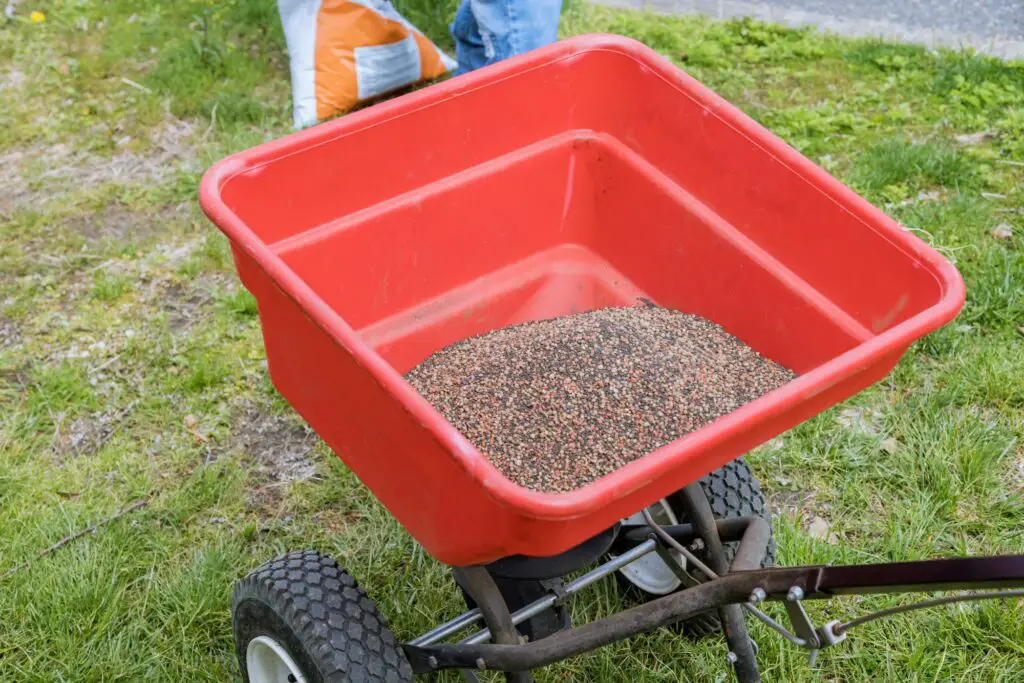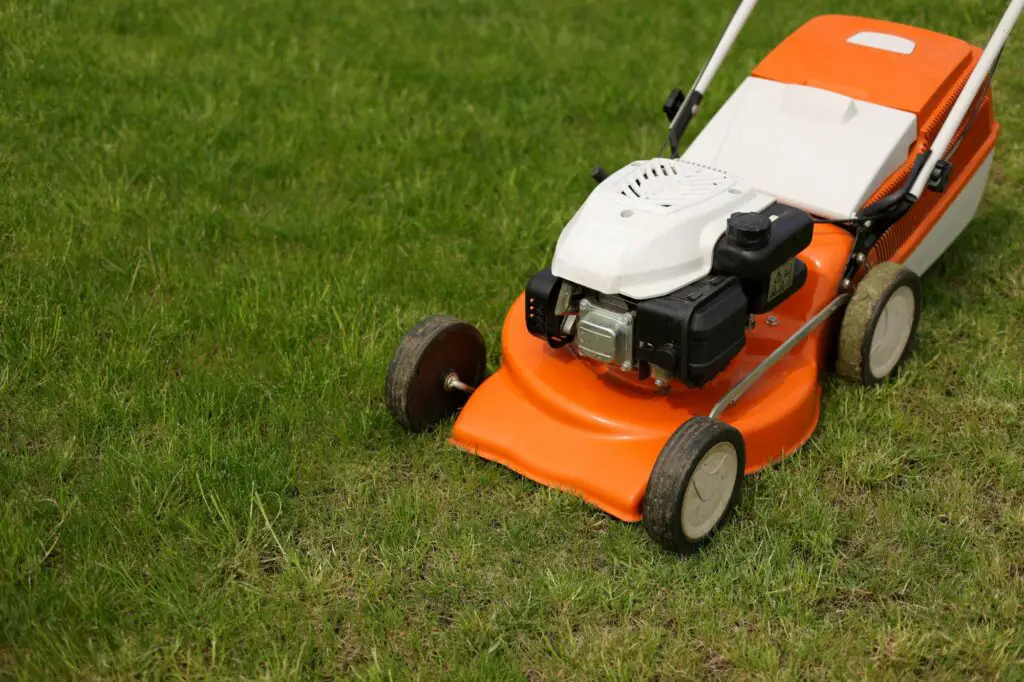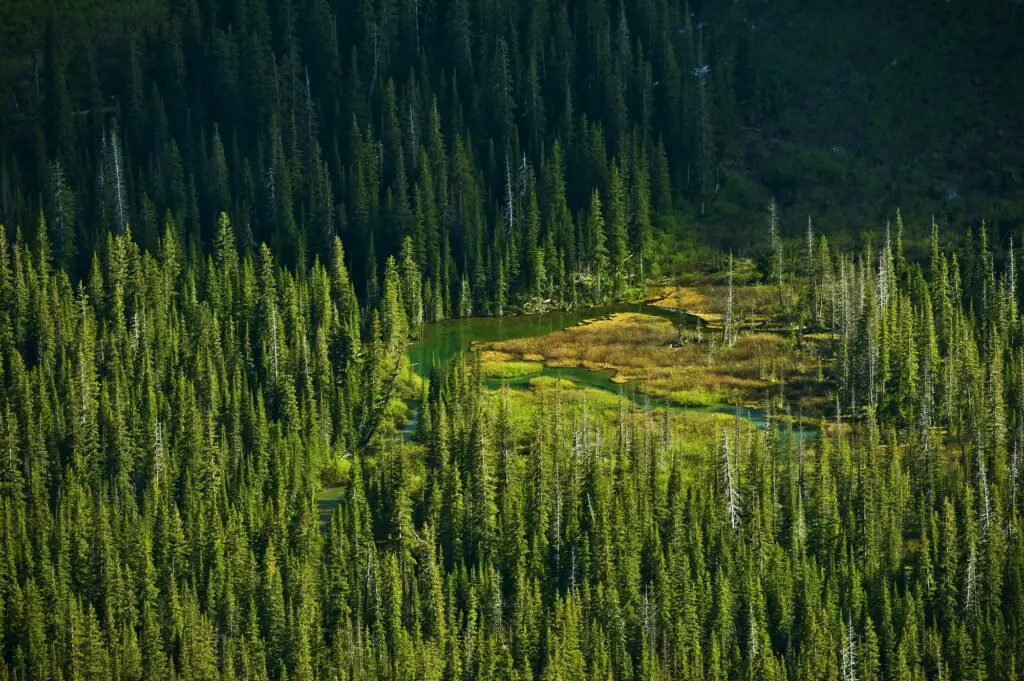When it comes to planting grass seed in Montana, timing is everything. Montana’s climate is unique, with its cold winters, hot summers, and arid conditions. To ensure success, it’s important to choose the right grass seed and plant it at the ideal time.
Understanding Montana’s climate is key to planting grass seed successfully. Montana’s climate is influenced by its geographical diversity, including the Continental Divide. This results in a wide range of temperatures and precipitation levels throughout the state. In general, Montana has a semi-arid climate, with most areas receiving less than 15 inches of precipitation per year. This means that it’s important to choose grass seed that is well-suited to Montana’s climate and can withstand periods of drought.
Key Takeaways
- Choose the right grass seed for Montana’s unique climate.
- Plant grass seed during the late summer or early fall for the best chance of success.
- Maintain your lawn by fertilizing and mowing regularly, and be prepared to deal with challenges like drought and weeds.
Don’t miss these related articles:
When to Plant Rye Grass in Florida? 7 Important Considerations
What to Plant with Karl Foerster Grass? 3 Unique Types & Best Care Tips
New Fescue Grass Turning Yellow: 4 Causes, Solutions & Best Care Tips

Understanding Montana’s Climate
Montana’s climate is known for being extreme and unpredictable. The state has a continental climate with long, cold winters and short, hot summers. Montana’s location in the Rocky Mountains also means that altitude plays a significant role in determining the climate.
The short growing season in Montana is another factor that affects when to plant grass seed. The growing season is typically between 90 and 120 days, depending on the location and altitude. This means that it is crucial to plant grass seed at the right time to ensure that it has enough time to grow and establish before winter sets in.
Montana’s winter climate is characterized by cold temperatures and heavy snowfall. The state’s average winter temperature ranges from 0°F to 20°F, with some areas experiencing temperatures as low as -40°F. The heavy snowfall can also make it challenging to plant grass seed in the fall, as the ground may be covered in snow.
In the summer, Montana experiences hot temperatures, with average temperatures ranging from 70°F to 85°F. However, it is worth noting that temperatures can vary significantly depending on altitude and location. For example, areas in the mountains will be cooler than areas in the valleys.
Altitude is another crucial factor that affects Montana’s climate. The higher the altitude, the colder the temperature. This means that areas in the mountains will have a shorter growing season than areas in the valleys. It is essential to take altitude into account when deciding when to plant grass seed.

Choosing the Right Grass Seed
Choosing the right grass seed is crucial for a successful lawn in Montana. There are many options available, each with its own strengths and weaknesses. When selecting a grass seed, it is important to consider factors such as climate, soil type, and the intended use of the lawn.
Cool-Season Grasses
Cool-season grasses are the most common type of grass used in Montana. They are well-suited to the state’s cool, dry climate and can thrive in a variety of soil types. Some popular cool-season grasses include:
- Kentucky Bluegrass: Kentucky bluegrass is a popular choice for lawns in Montana. It is hardy and can withstand cold temperatures, making it ideal for the state’s climate. Kentucky bluegrass is also known for its dense, lush growth and attractive blue-green color.
- Fine Fescue: Fine fescues are a group of grasses that are well-suited to Montana’s climate. They are drought-tolerant and can grow in a variety of soil types. Fine fescue grasses are also known for their fine texture and attractive appearance.
- Perennial Ryegrass: Perennial ryegrass is a fast-growing grass that is often used to overseed lawns in Montana. It can germinate quickly and provide temporary cover while other grasses establish themselves. Perennial ryegrass is also known for its dark green color and fine texture.
Warm-Season Grasses
Warm-season grasses are not as well-suited to Montana’s climate as cool-season grasses. They require warmer temperatures and more water to thrive, making them less practical for most lawns in the state. Some popular warm-season grasses include:
- Bermuda Grass: Bermuda grass is a popular warm-season grass that is well-suited to hot, dry climates. It is drought-tolerant and can grow in a variety of soil types. Bermuda grass is also known for its dense growth and attractive appearance.
- Zoysia Grass: Zoysia grass is another warm-season grass that is well-suited to hot, dry climates. It is drought-tolerant and can grow in a variety of soil types. Zoysia grass is also known for its dense growth and attractive appearance.
Other Grasses
There are many other types of grasses that can be used in Montana, depending on the specific needs of the lawn. Some other popular grasses include:
- Tall Fescue: Tall fescue is a popular grass that is well-suited to Montana’s climate. It is drought-tolerant and can grow in a variety of soil types. Tall fescue is also known for its deep root system and ability to withstand heavy foot traffic.
- Bahia Grass: Bahia grass is a warm-season grass that is well-suited to hot, humid climates. It is drought-tolerant and can grow in a variety of soil types. Bahia grass is also known for its deep root system and ability to withstand heavy foot traffic.
- Crested Wheatgrass: Crested wheatgrass is a cool-season grass that is well-suited to Montana’s climate. It is drought-tolerant and can grow in a variety of soil types. Crested wheatgrass is also known for its deep root system and ability to prevent erosion.
- Smooth Bromegrass: Smooth bromegrass is a cool-season grass that is well-suited to Montana’s climate. It is drought-tolerant and can grow in a variety of soil types. Smooth bromegrass is also known for its ability to prevent erosion and provide forage for livestock.
- Blue Grama: Blue grama is a warm-season grass that is well-suited to Montana’s climate. It is drought-tolerant and can grow in a variety of soil types. Blue grama is also known for its attractive appearance and ability to withstand heavy foot traffic.
When selecting a grass seed, it is important to consider the specific needs of the lawn. Different cultivars of each grass type may be available, each with its own strengths and weaknesses. It is important to consult with a professional or do thorough research before making a final decision.

Ideal Planting Conditions
When it comes to planting grass seed in Montana, timing is everything. The best time to plant grass seed is in the late summer or early fall when temperatures are cool and the soil is moist. During this time, the soil has the best chance of retaining water and the seed is able to receive enough sunlight and warmth to germinate.
The ideal soil conditions for planting grass seed in Montana are a well-draining soil with a pH level between 6.0 and 7.0. The soil should be prepared by removing any debris, rocks, or weeds. A tiller can be used to break up the soil and create a smooth surface for planting.
Spring is also a good time to plant grass seed in Montana, but keep in mind that planting in spring may give grass a longer growing season in which to get well established, but the summer heat and weeds may cause problems. It is important to wait until soil temperatures are consistently above 50 degrees Fahrenheit to plant grass seed in the spring.
Grass seed needs moisture to germinate, so it is important to water the area thoroughly after planting. The soil should be kept moist but not saturated during the germination process. Once the grass has established, it should be watered deeply but infrequently to encourage deep root growth.
Grass seed also needs sunlight to germinate, so it is important to plant in an area that receives full sun or partial shade. Some shade is okay, but too much shade can inhibit growth. It is also important to avoid planting in areas that are prone to flooding or standing water, as this can drown the seedlings.
Planting Grass Seed in Montana
Planting grass seed in Montana can be a daunting task, but with the right knowledge and preparation, it can be a rewarding experience. There are several factors to consider when planting grass seed in Montana, including soil type, timing, and weather conditions.
Montana has a variety of soil types, including clay, loam, and sandy soils. It is important to choose the right type of grass seed that will thrive in the soil type of your lawn. For example, if you have clay soil, you may want to choose a grass seed that is more tolerant of heavy soils, such as Kentucky bluegrass or fescue.
Timing is also crucial when planting grass seed in Montana. The best time to plant grass seed is in the late summer or early fall when temperatures are cool and the soil is moist. During this time, the soil has the best chance of retaining water, and the seed is able to receive enough sunlight and warmth to germinate.
Montana experiences extreme temperatures, with hot summers and cold winters. It is important to choose a grass seed that is hardy enough to withstand these conditions. For example, cool-season grasses, such as Kentucky bluegrass and fescue, are better suited for Montana’s climate.
Before planting grass seed, it is important to prepare the soil by removing any debris and rocks. Adding compost to the soil can also help retain moisture and provide nutrients for the grass seed. It is also important to protect the grass seed from birds by covering the area with netting or straw.
Finally, it is crucial to choose high-quality grass seed to ensure the best results. Look for grass seed that is certified and labeled with the appropriate information, such as species, purity, and germination rate.

Maintaining Your Montana Lawn
Maintaining a healthy lawn in Montana requires some effort and regular maintenance. Here are some tips to keep your lawn healthy and looking its best.
Mowing Height
Mowing height is an essential factor in maintaining a healthy lawn. Montana lawns should be mowed at a height between 2.5 and 3 inches. Mowing too short can cause stress to the grass, making it more susceptible to disease and pests. On the other hand, mowing too high can lead to thatch buildup and a less attractive appearance.
Regular Watering
Regular watering is crucial to maintaining a healthy lawn. Montana lawns need about 1 inch of water per week, either from rainfall or irrigation. Watering deeply and infrequently is better than frequent shallow watering. It encourages deep root growth, making the grass more drought-tolerant.
Weed Control
Weed control is an essential part of lawn maintenance. Weeds compete with grass for nutrients, sunlight, and water, making it more difficult for the lawn to thrive. Regular weeding and the use of pre-emergent herbicides can help control weeds.
Overseeding
Overseeding is the process of adding grass seed to an existing lawn to improve its density and appearance. Montana lawns benefit from overseeding in the fall, between mid-August and mid-September. Fall overseeding allows the grass to establish itself before winter and provides a head start in the spring.
Health
A healthy lawn is more than just a pretty lawn. A healthy lawn can improve air quality, reduce soil erosion, and filter rainwater. By maintaining a healthy lawn, homeowners can improve their health and the health of their community.

Dealing with Montana’s Natural Resources and Challenges
Montana is a state with abundant natural resources, including forests, rangelands, and grasslands. However, Montana’s mountainous terrain and low precipitation can present challenges for those looking to grow grass.
One way to overcome these challenges is to choose grasses that are native to Montana, as they are adapted to the state’s climate and soil conditions. For example, rhizomatous grasses like Bluebunch wheatgrass and Sandberg bluegrass are well-suited to Montana’s dry climate and poor soil conditions.
Another factor to consider when planting grass in Montana is shade and drought tolerance. Some grasses, like fescue and ryegrass, are more shade tolerant, while others, like buffalo grass, are more drought tolerant. Choosing a grass that is well-suited to the specific conditions of the planting area can help ensure success.
It is also important to time grass planting correctly. Montana’s last frost date varies by region, but generally falls between early May and mid-June. Planting too early can leave grass vulnerable to frost damage, while planting too late can result in insufficient growth before winter arrives.
In addition to selecting the right grass species and timing planting correctly, there are other steps that can be taken to mitigate challenges when planting grass in Montana. For example, incorporating grains like barley or oats into the planting mix can help prevent soil erosion and improve soil health.
Frequently Asked Questions
What kind of grass grows best in Montana?
Montana’s harsh climate and soil conditions require grass that is hardy and can withstand extreme temperatures. Native grasses such as bluebunch wheatgrass, western wheatgrass, and buffalo grass are well-suited for Montana’s climate and soil. Kentucky bluegrass and perennial ryegrass are also popular choices for lawns in Montana.
What month should I put grass seed down?
The best time to plant grass seed in Montana is in the late summer or early fall, typically between August and October. During this time, the soil is moist, and temperatures are cool, which provides the best conditions for grass seed to germinate.
Can I plant grass seed in the fall in Montana?
Yes, fall is the ideal time to plant grass seed in Montana. The cooler temperatures and increased moisture provide optimal conditions for seed germination and root development.
Should I plant grass seed in fall or spring?
Fall is generally the best time to plant grass seed in Montana. Planting in the fall gives the grass a chance to establish a strong root system before the harsh winter months. Spring planting is also an option, but it can be more challenging due to the unpredictable weather conditions.
How to plant grass seed
To plant grass seed in Montana, prepare the soil by removing any debris and tilling the soil to a depth of 4-6 inches. Spread the seed evenly over the soil and cover with a thin layer of soil or compost. Water the area regularly to keep the soil moist until the grass is established.
Native Montana grass seed
Native Montana grasses are well adapted to the state’s harsh climate and soil conditions. They require less maintenance and watering than non-native grasses, making them a more environmentally friendly choice. Popular native grasses in Montana include bluebunch wheatgrass, western wheatgrass, and buffalo grass.

Hey, I’m Lisa and I’ve been an avid gardener for over 30 years. I love writing, talking and living in the garden! Feel free to connect with me on my socials below


